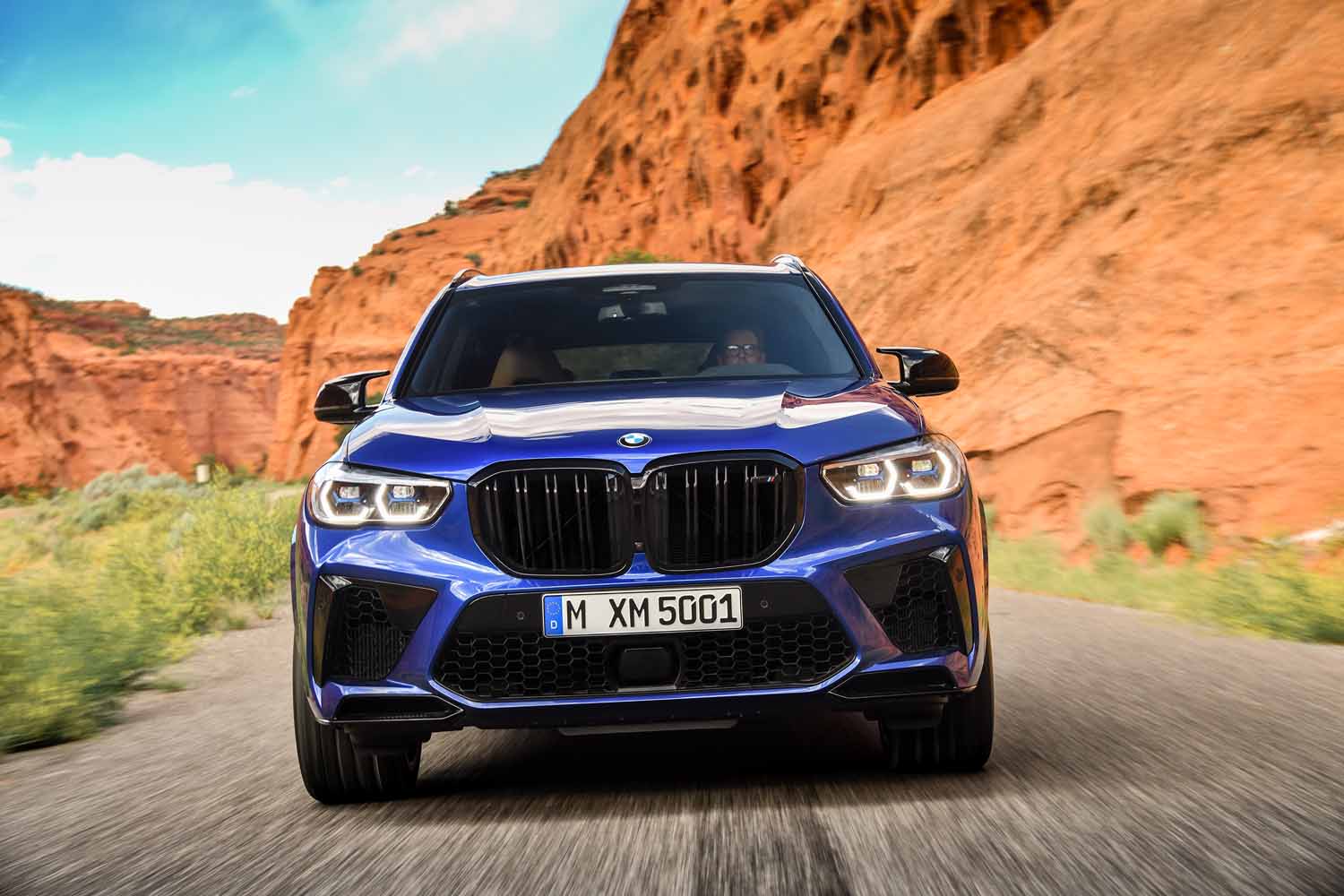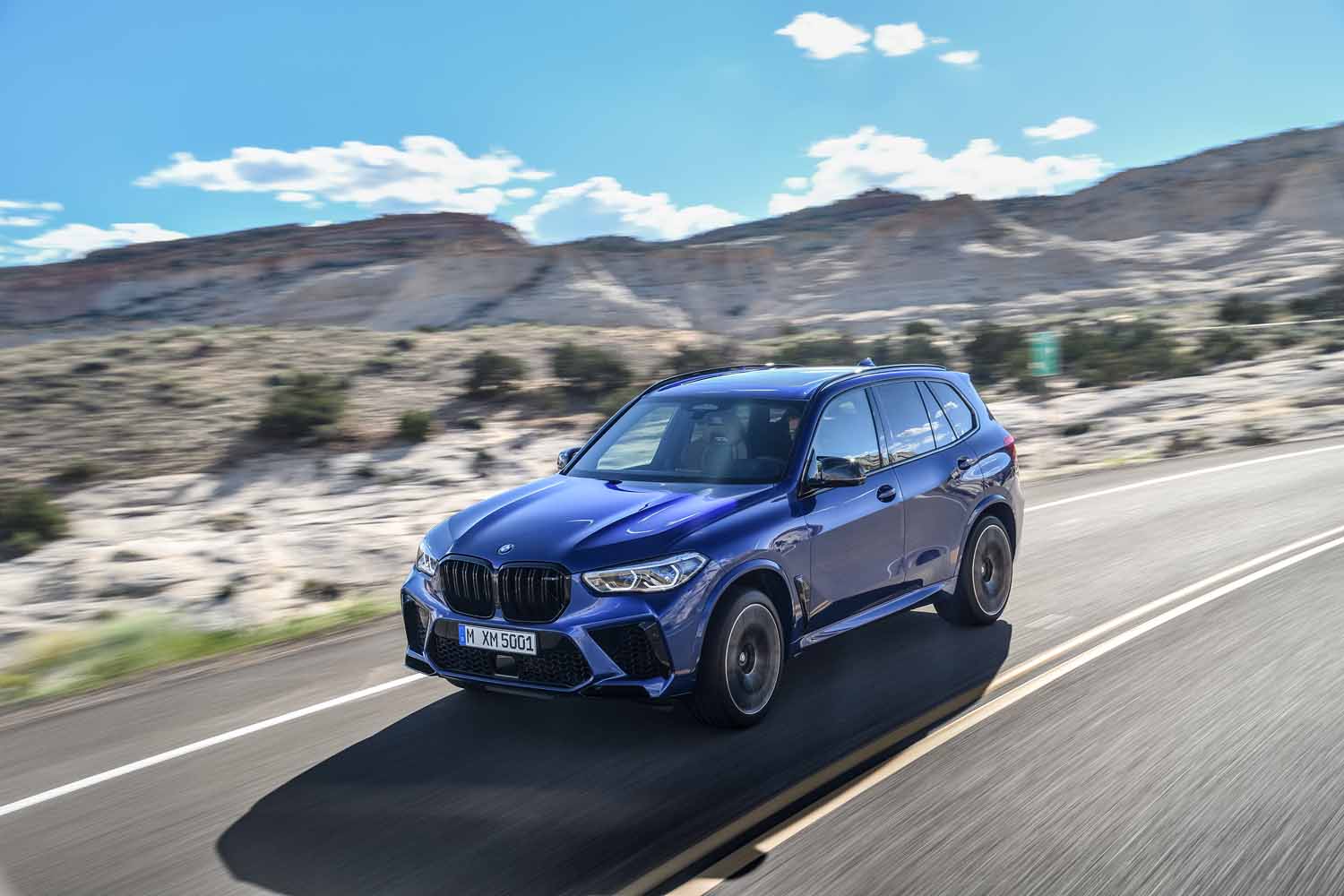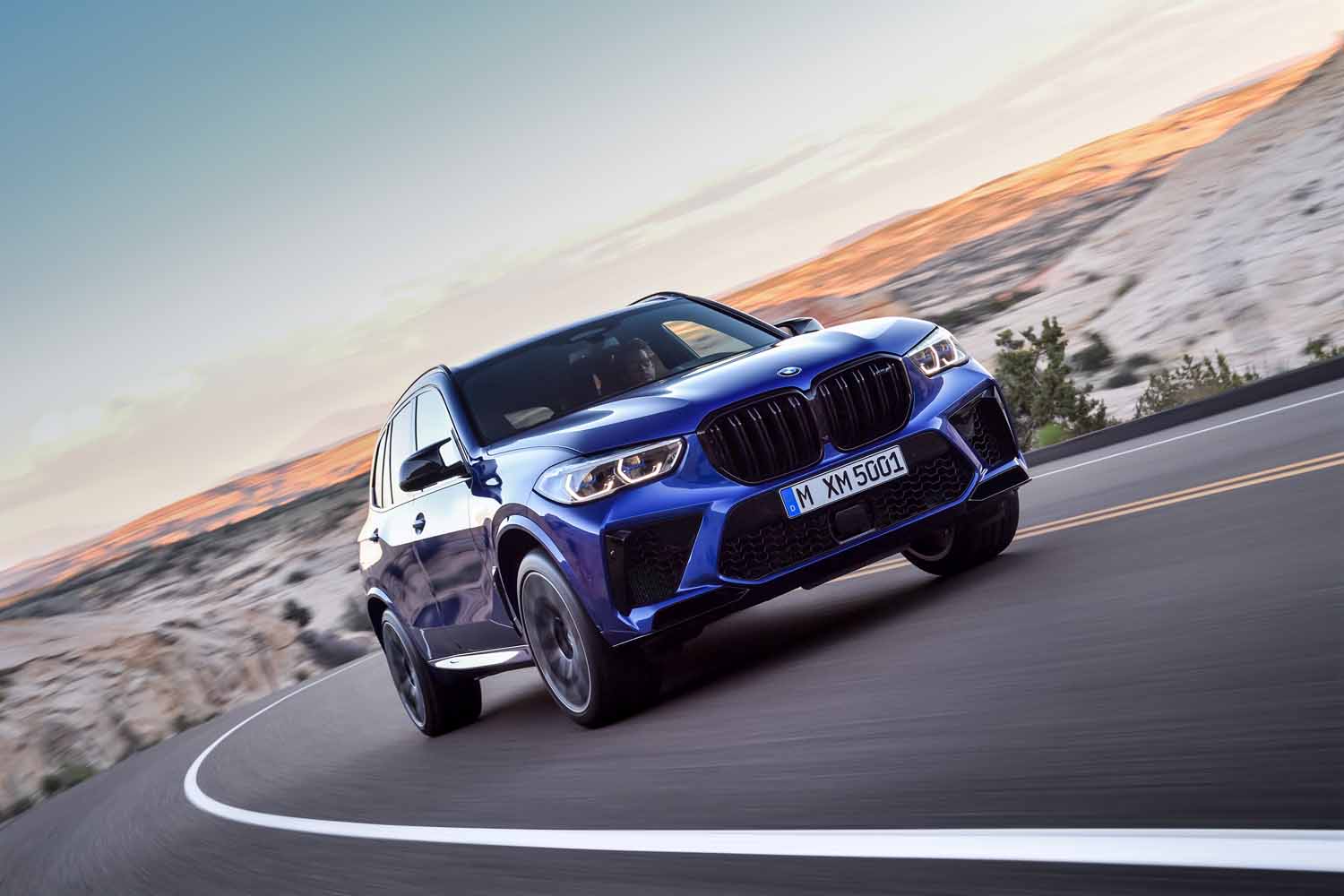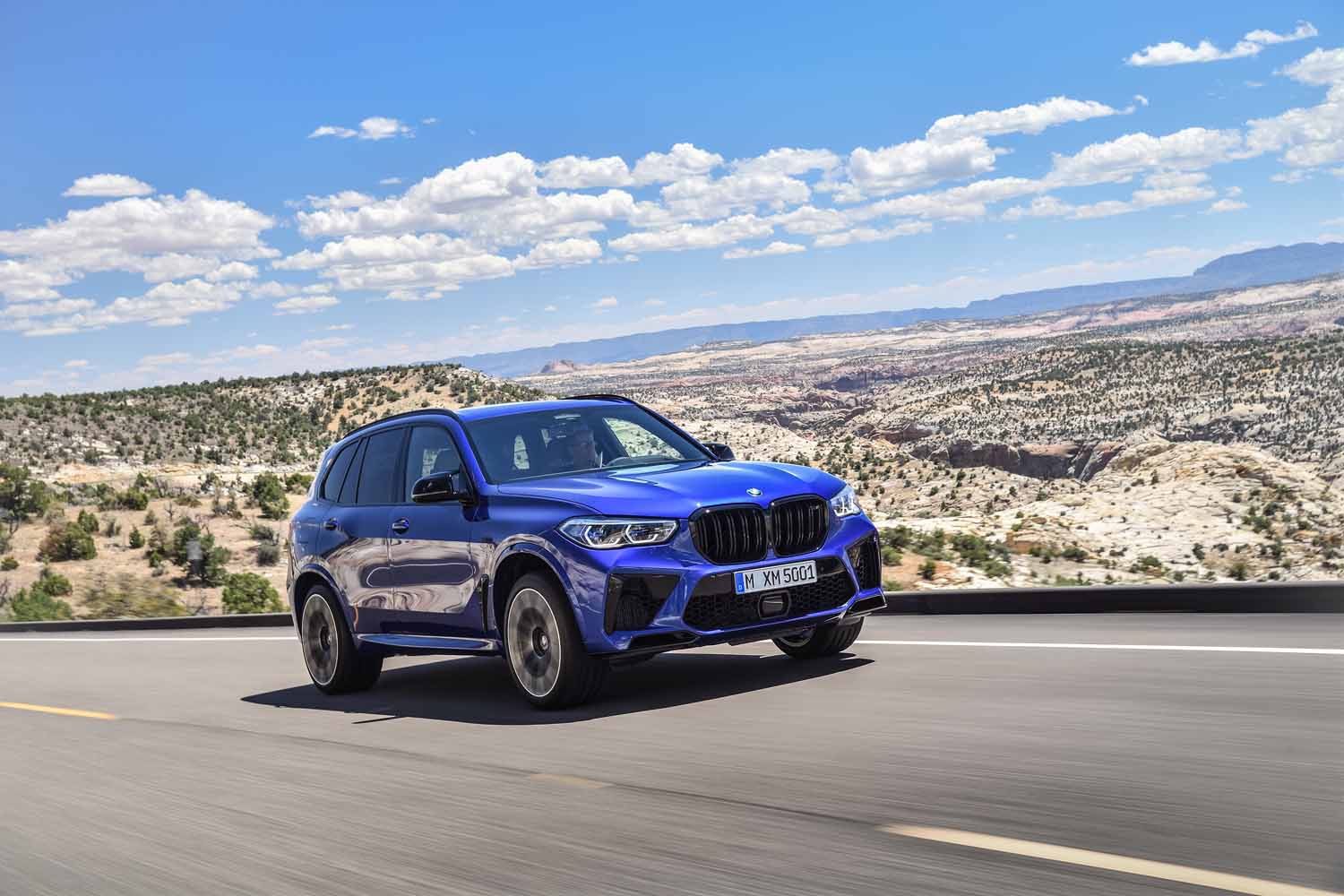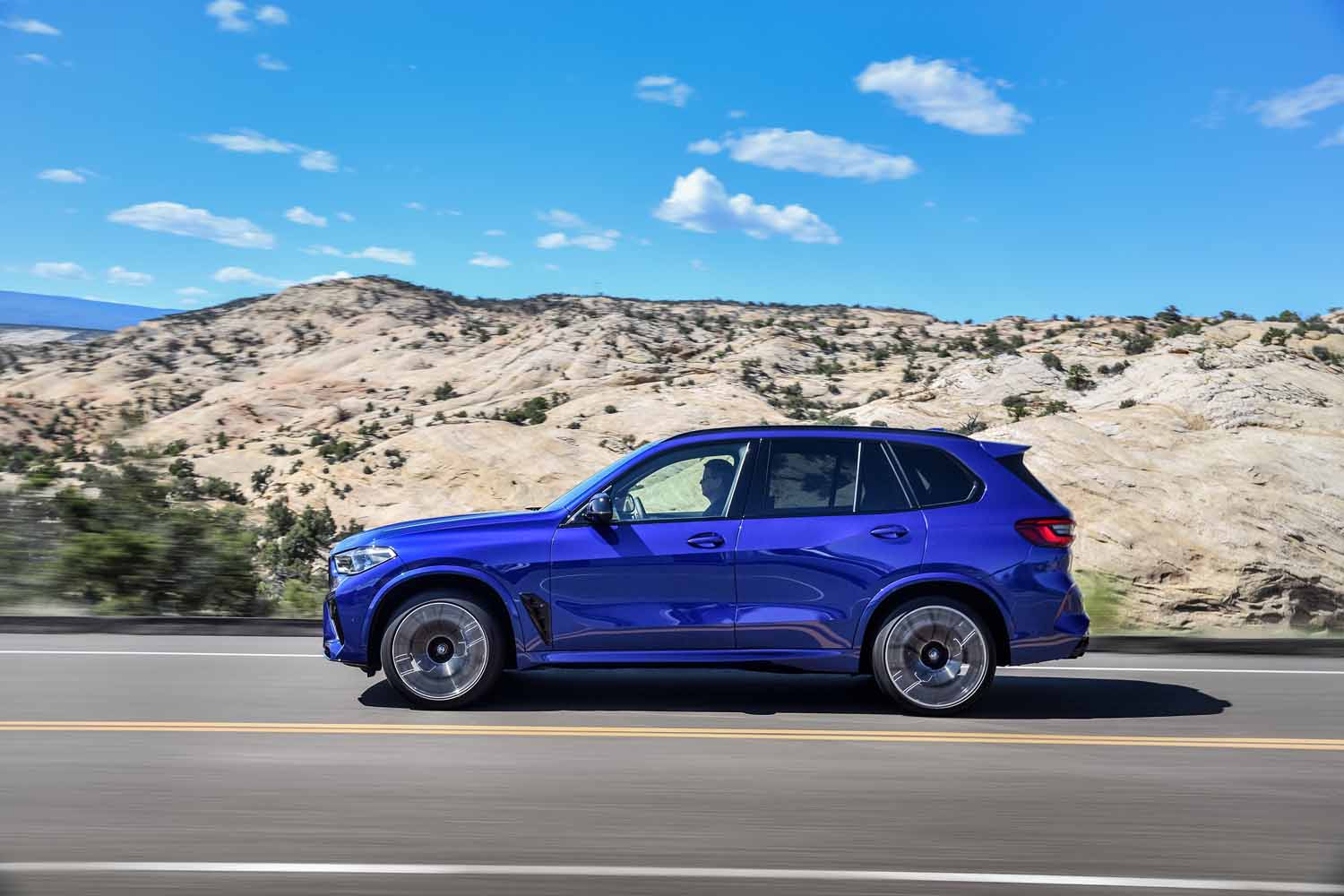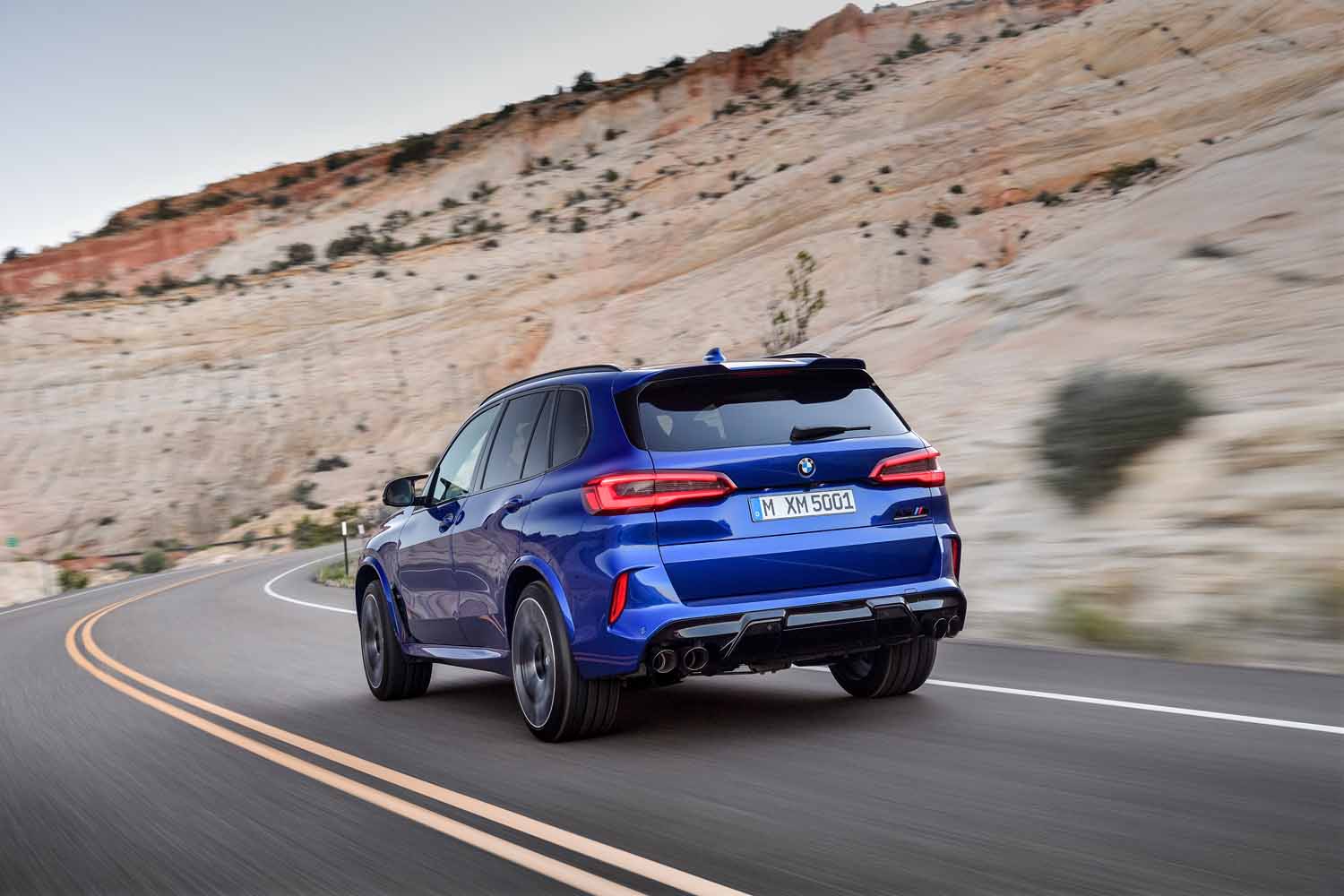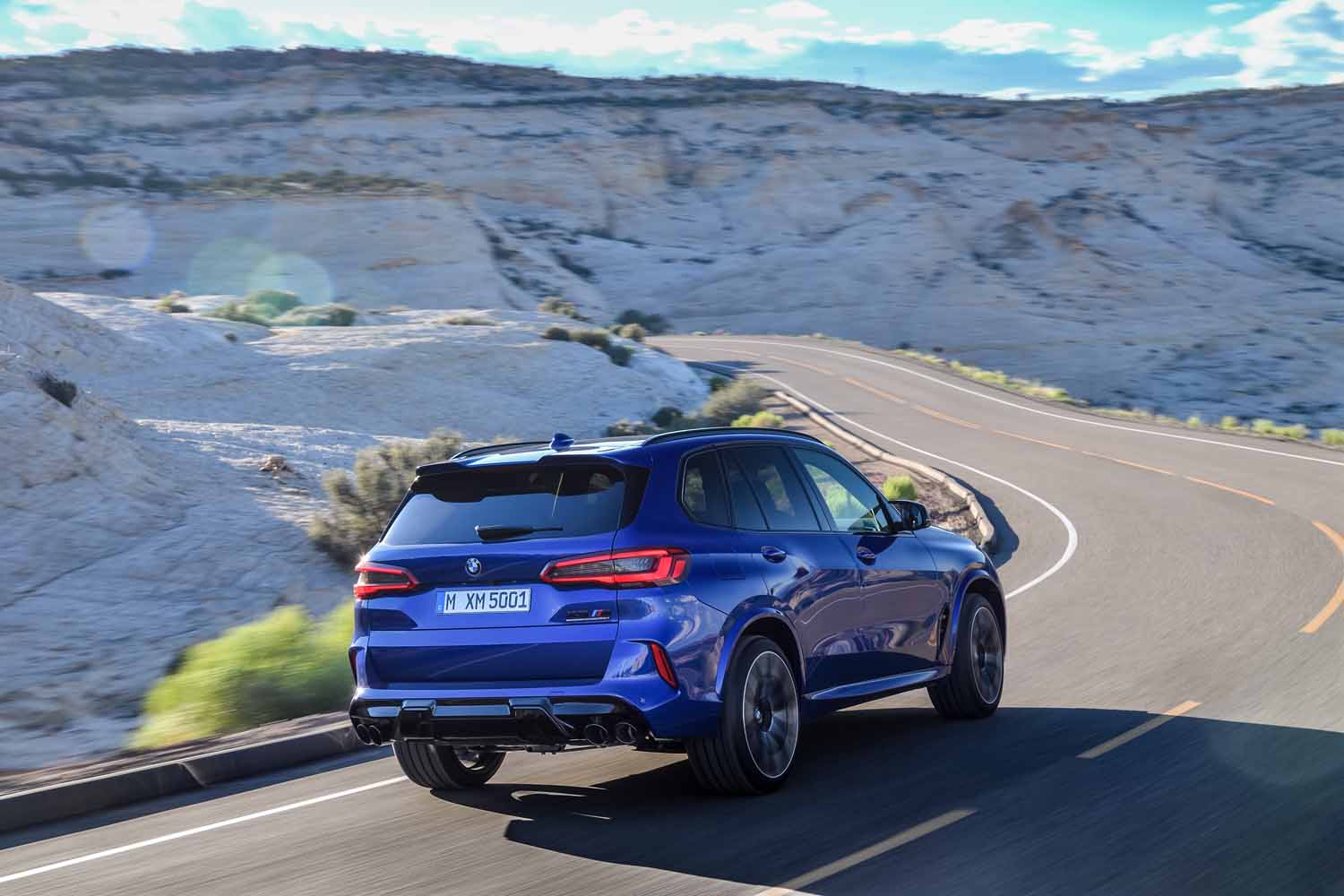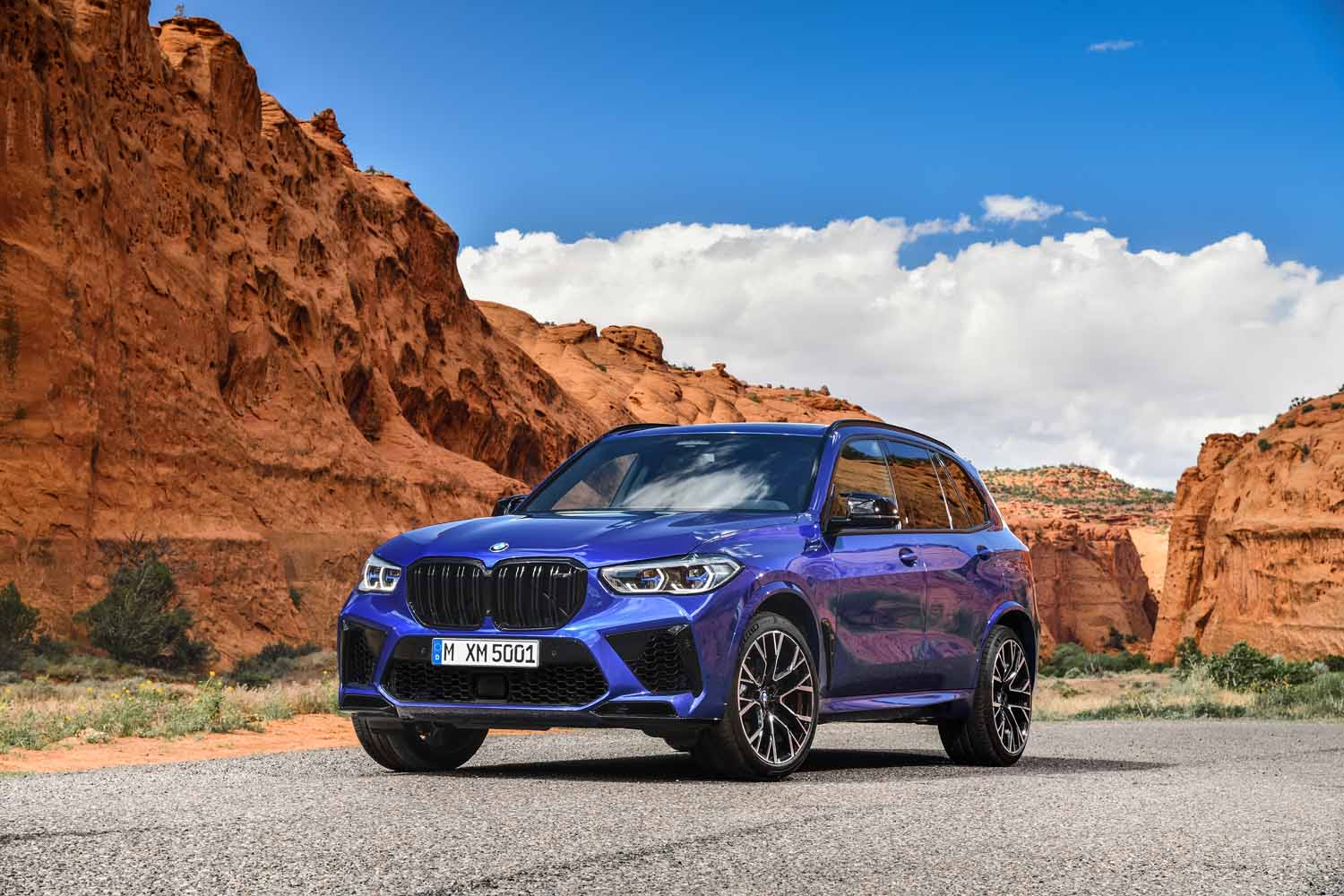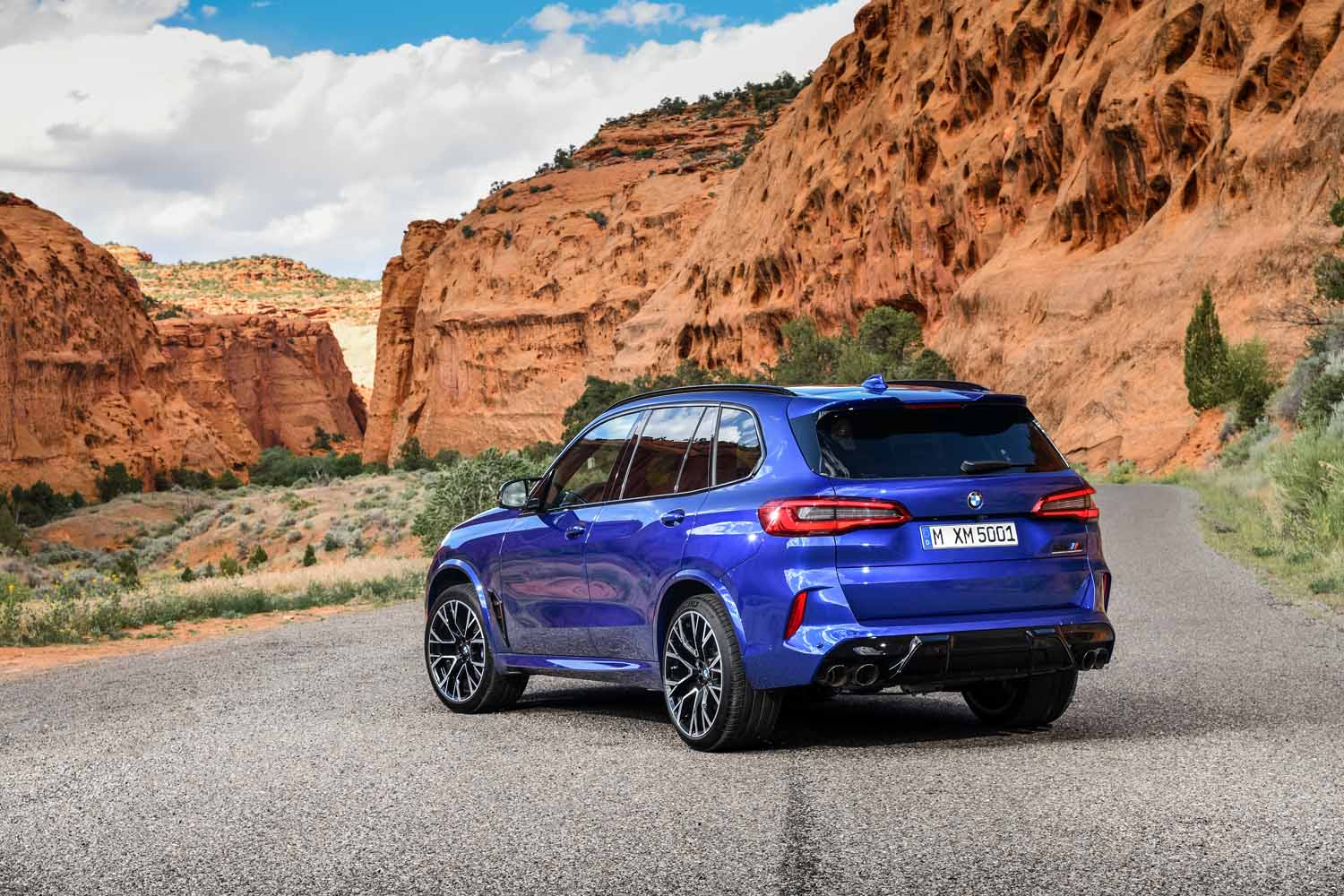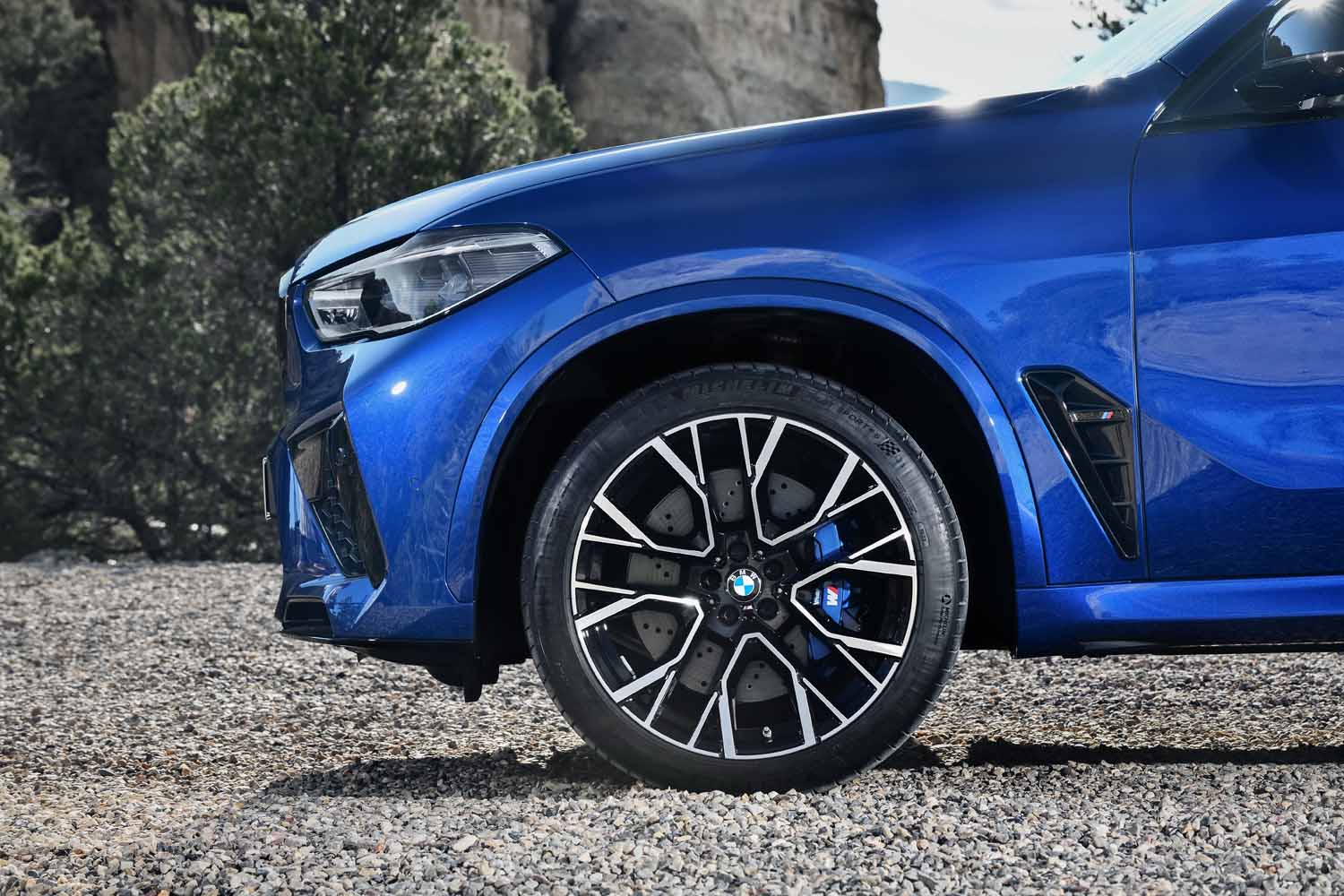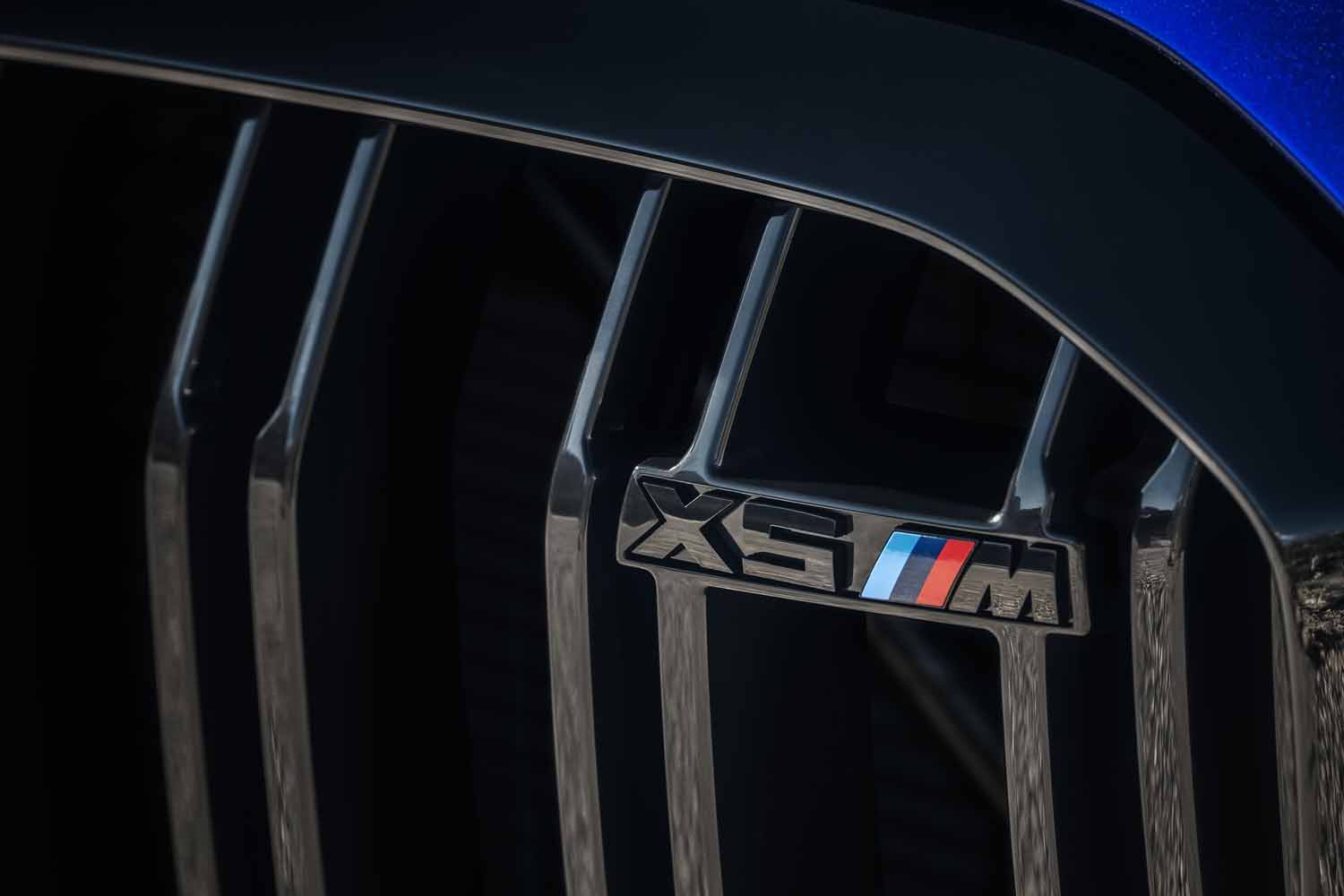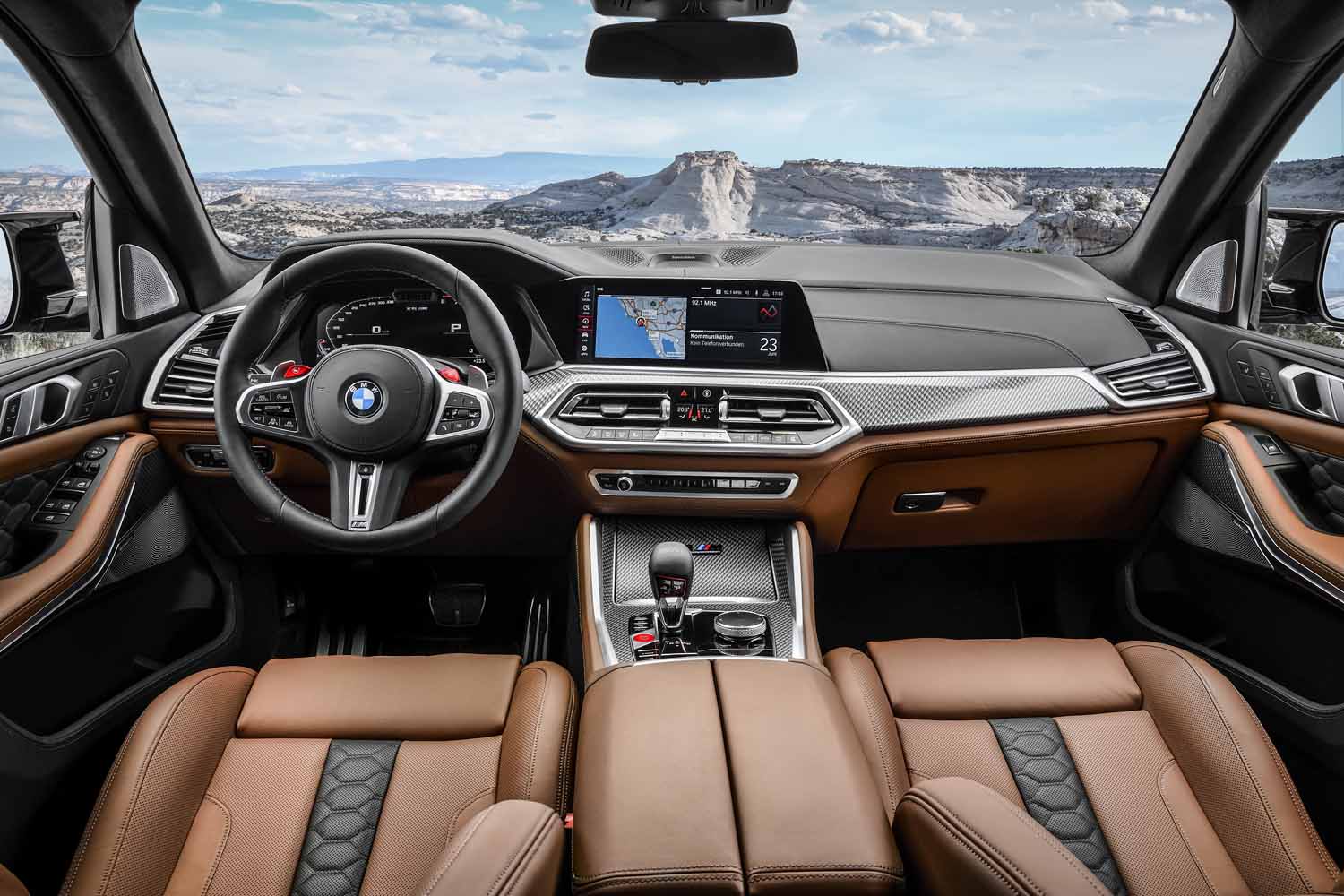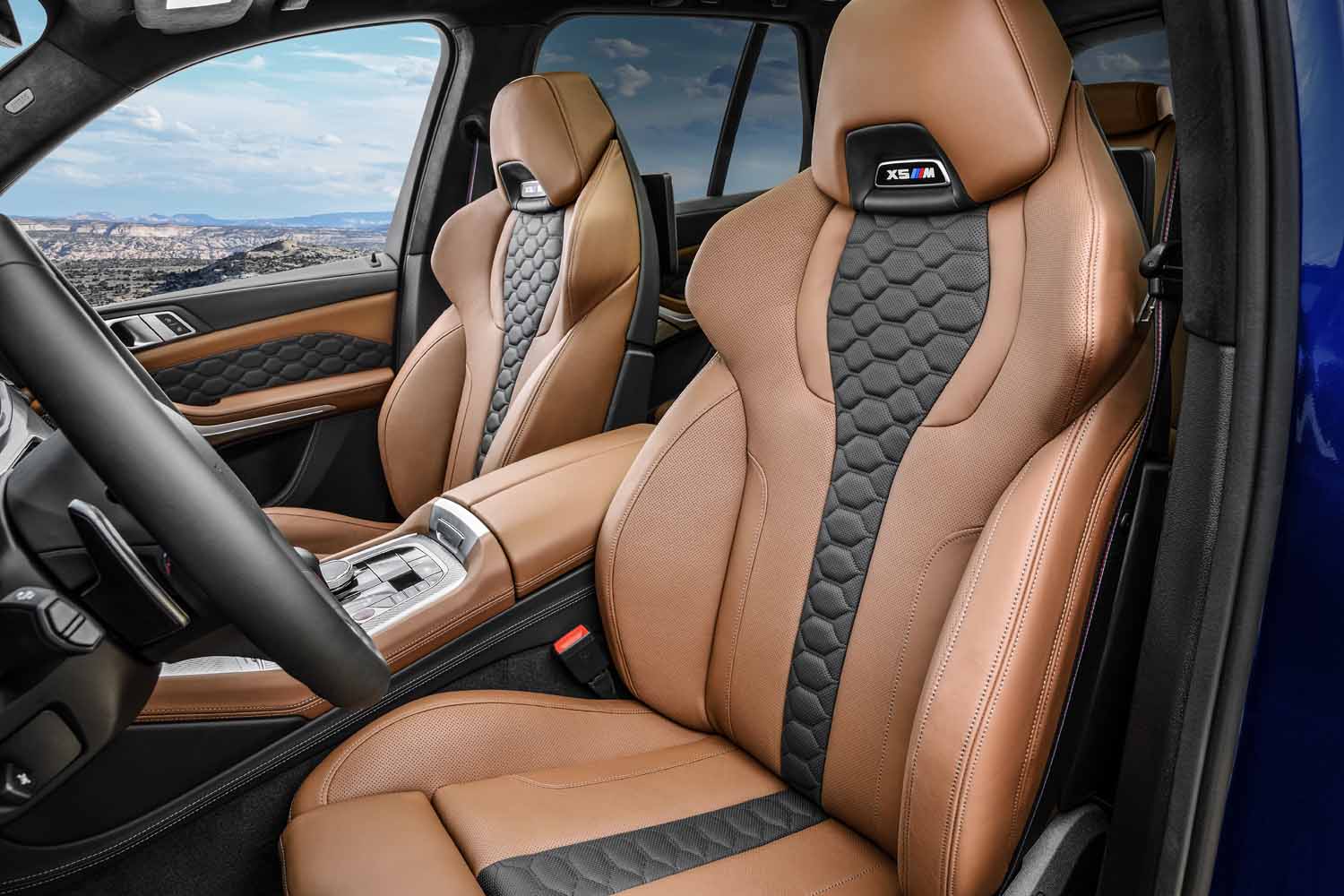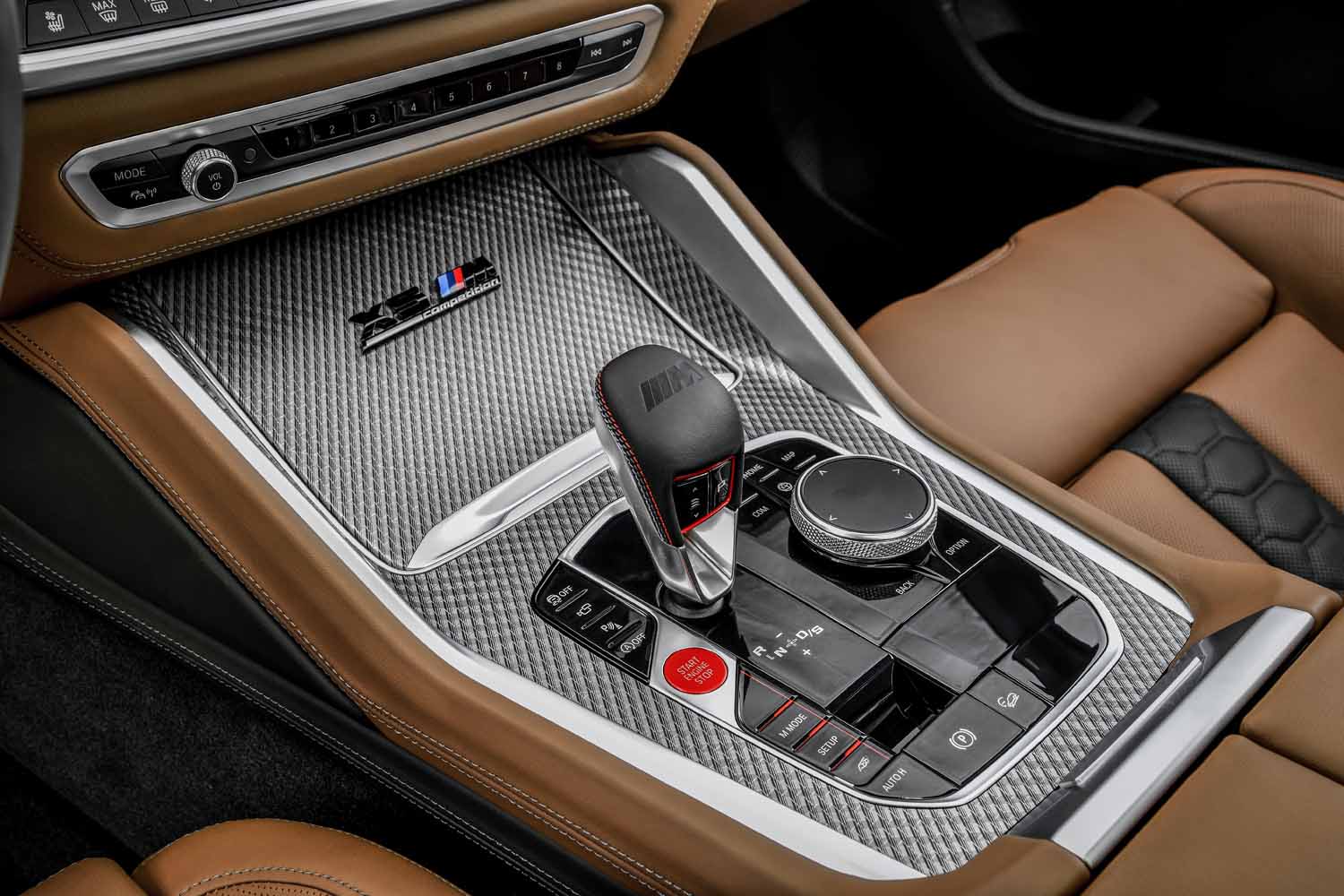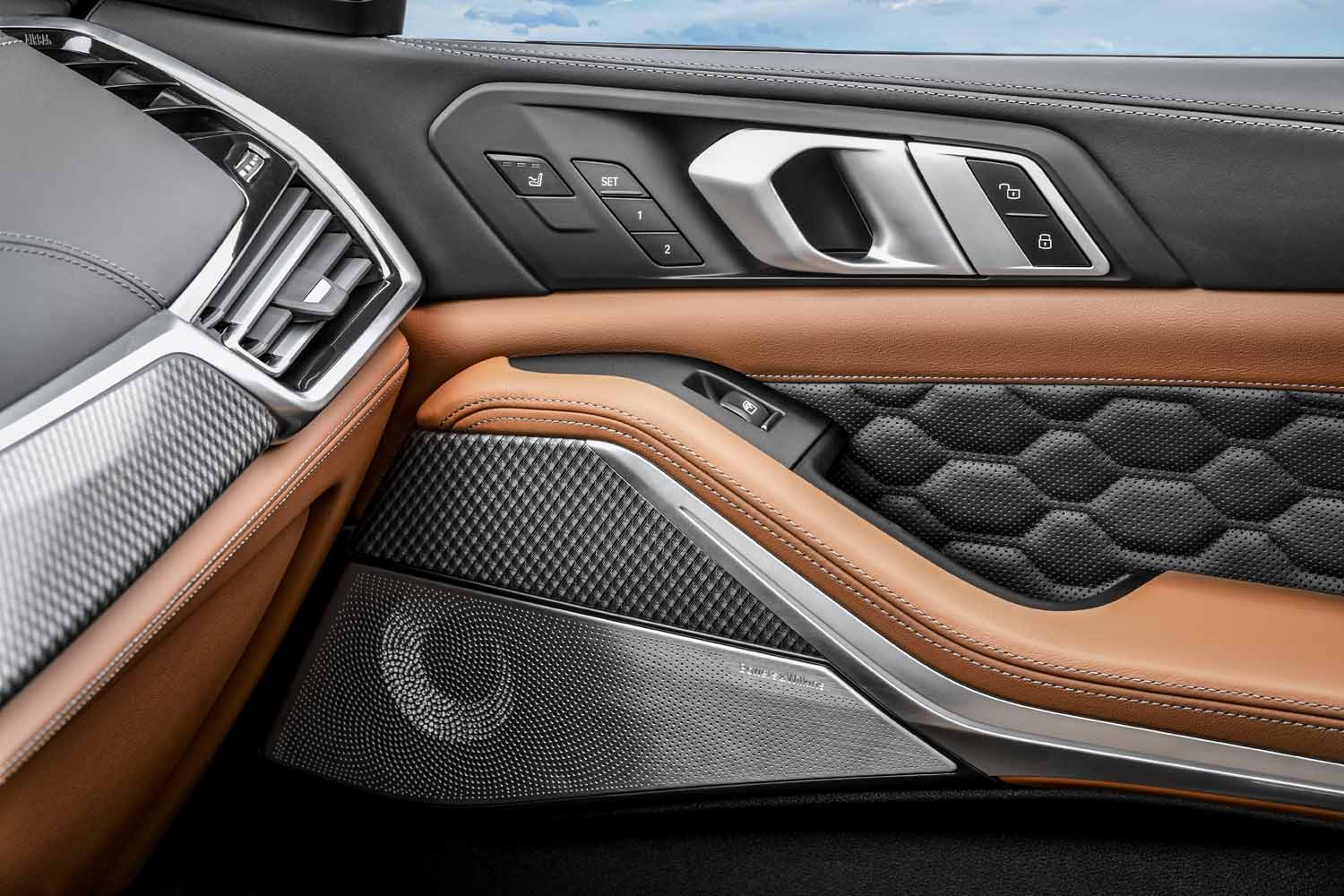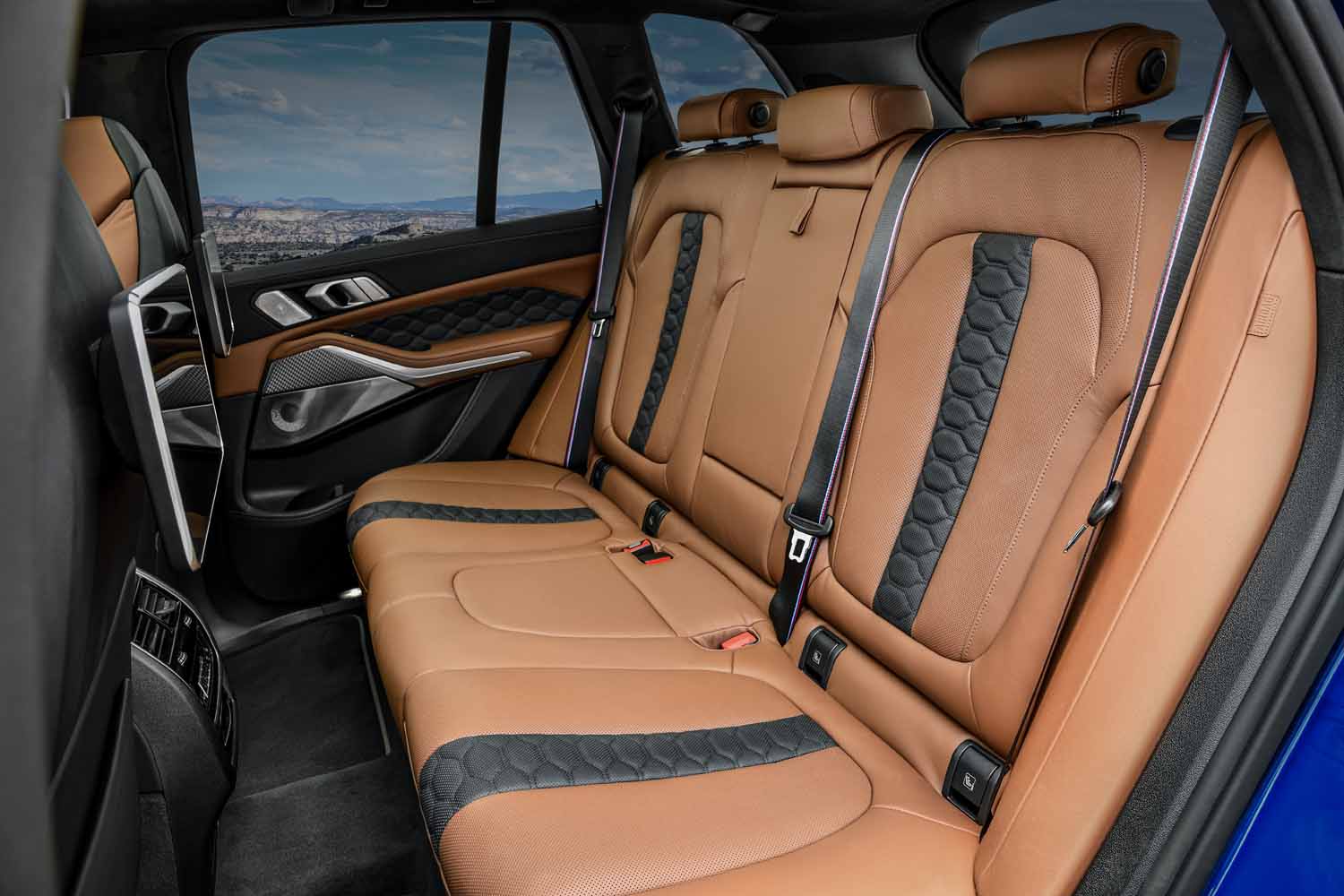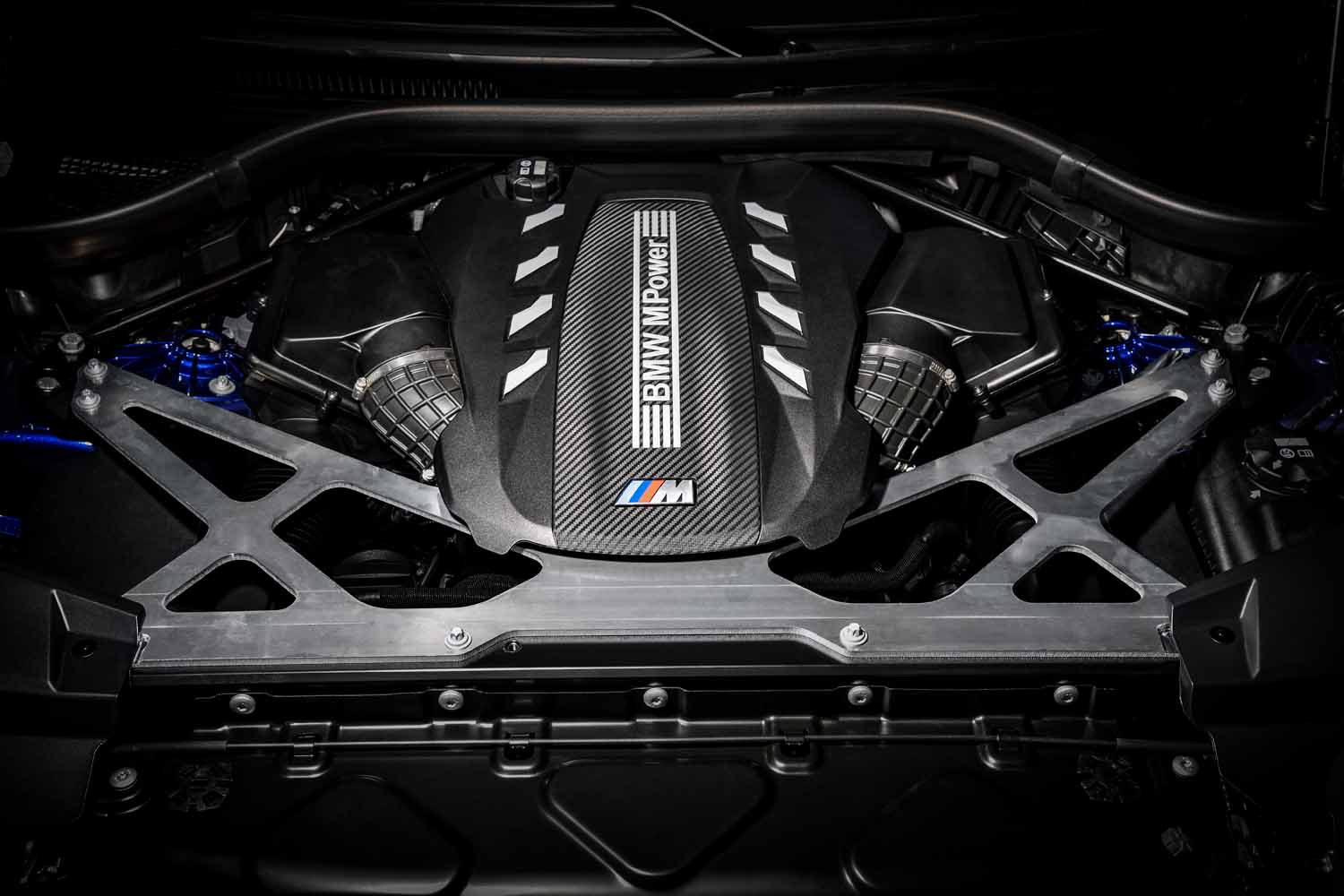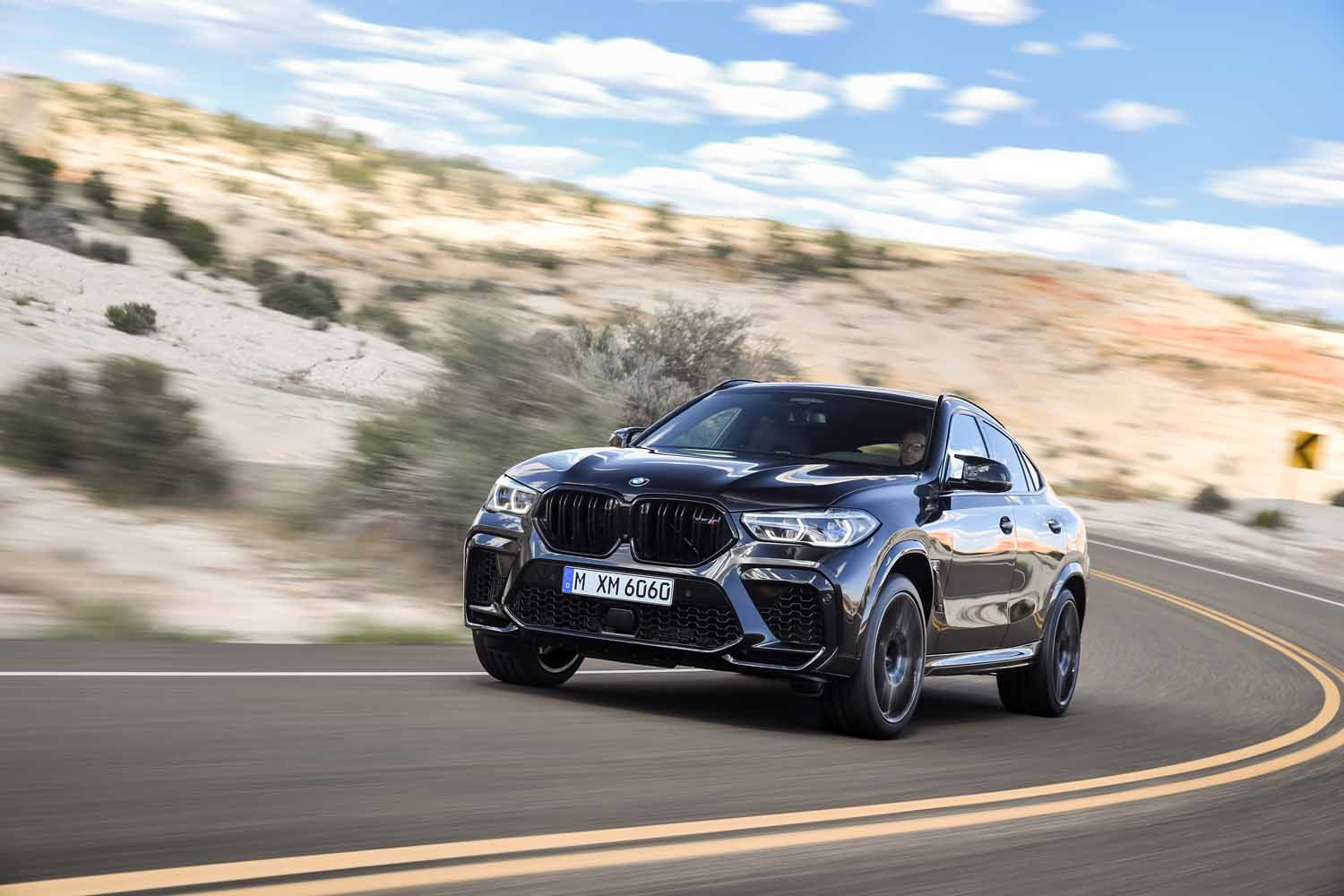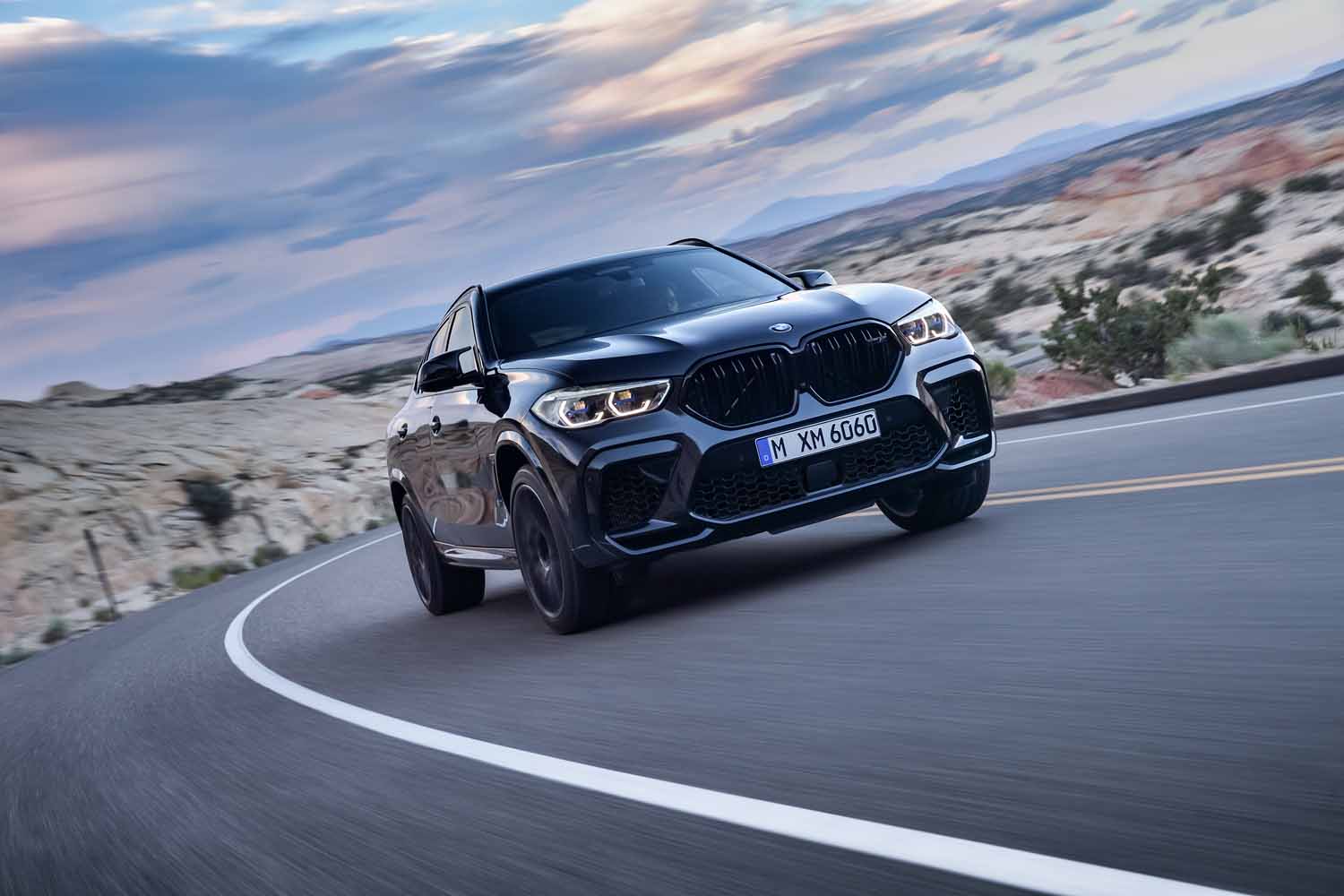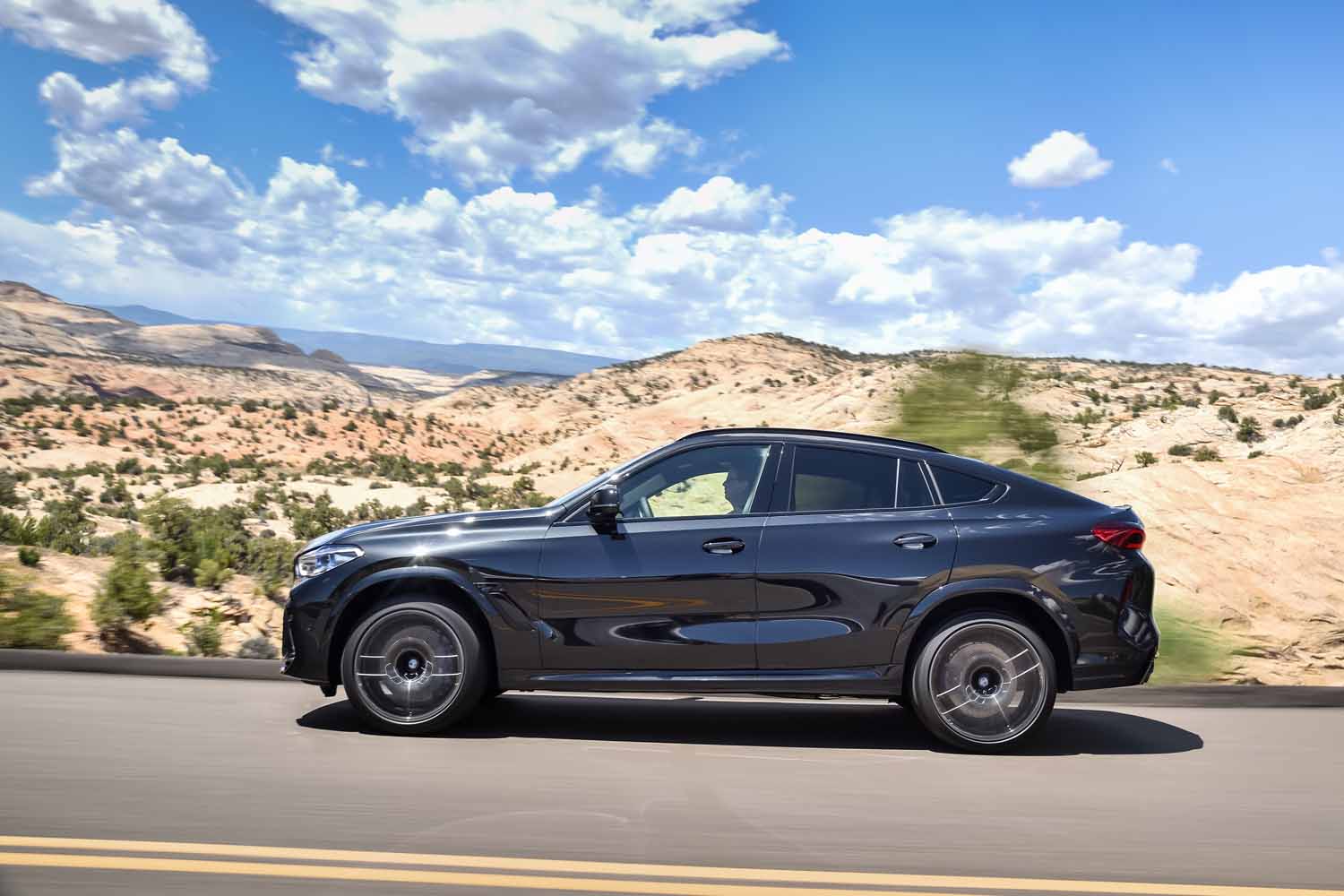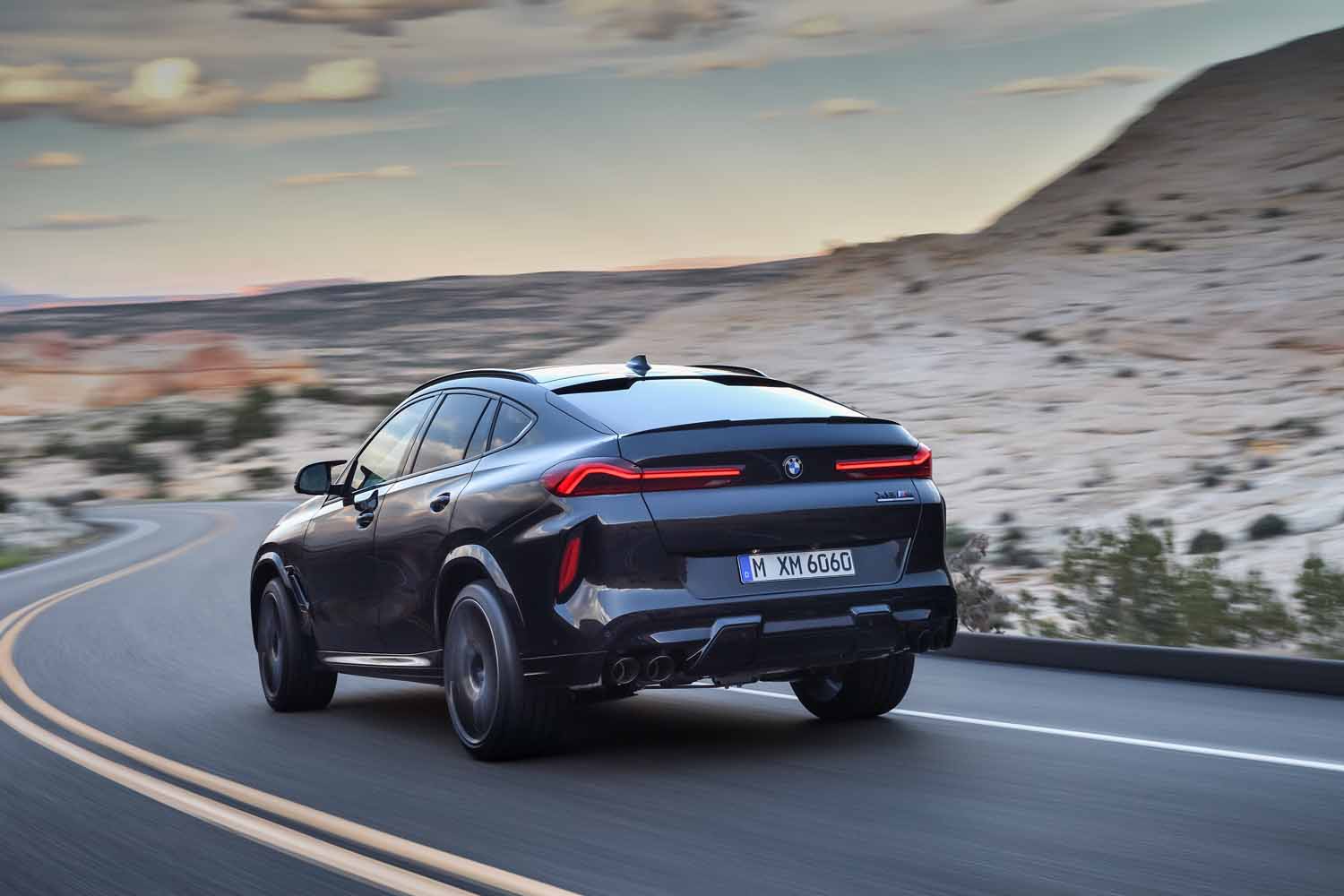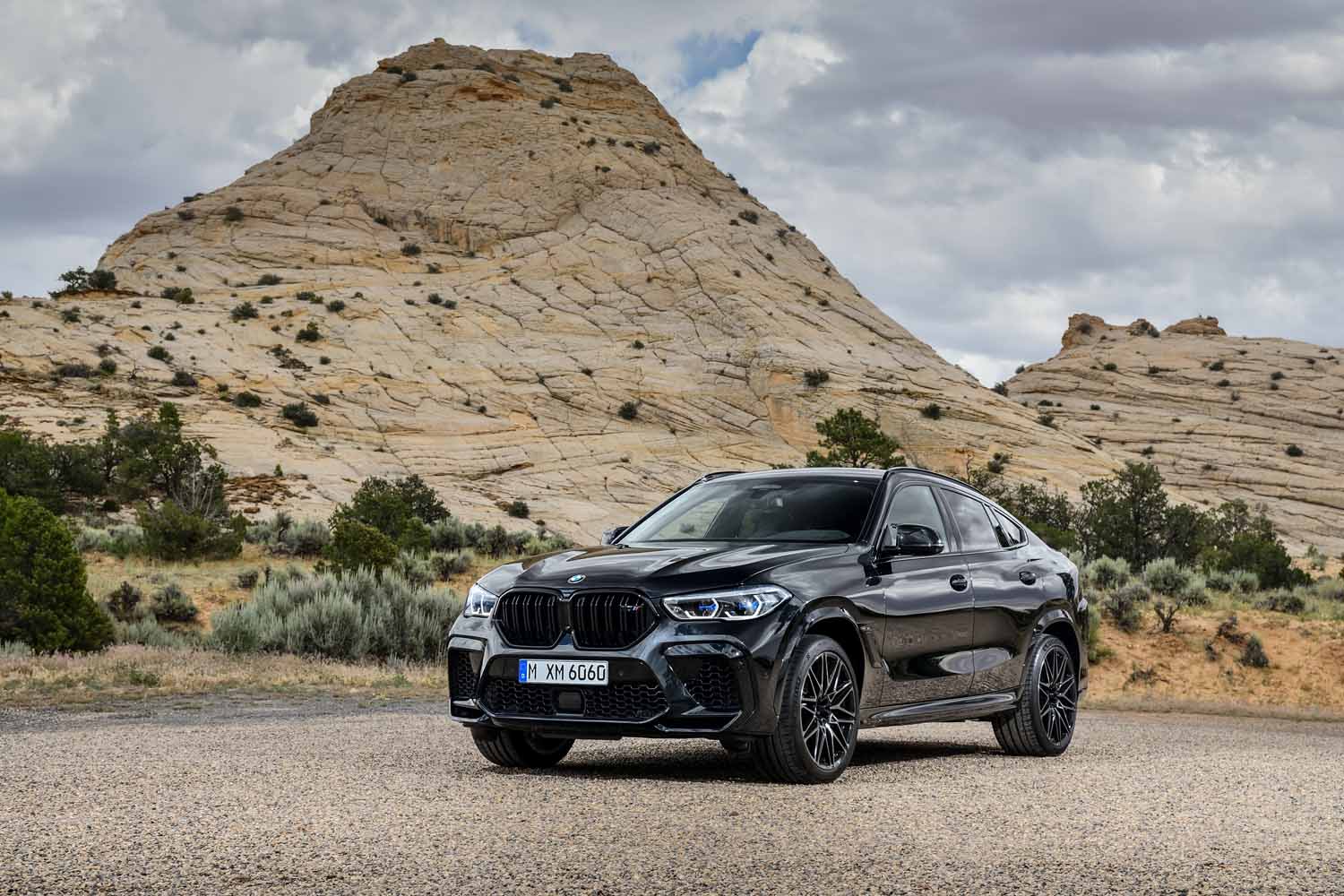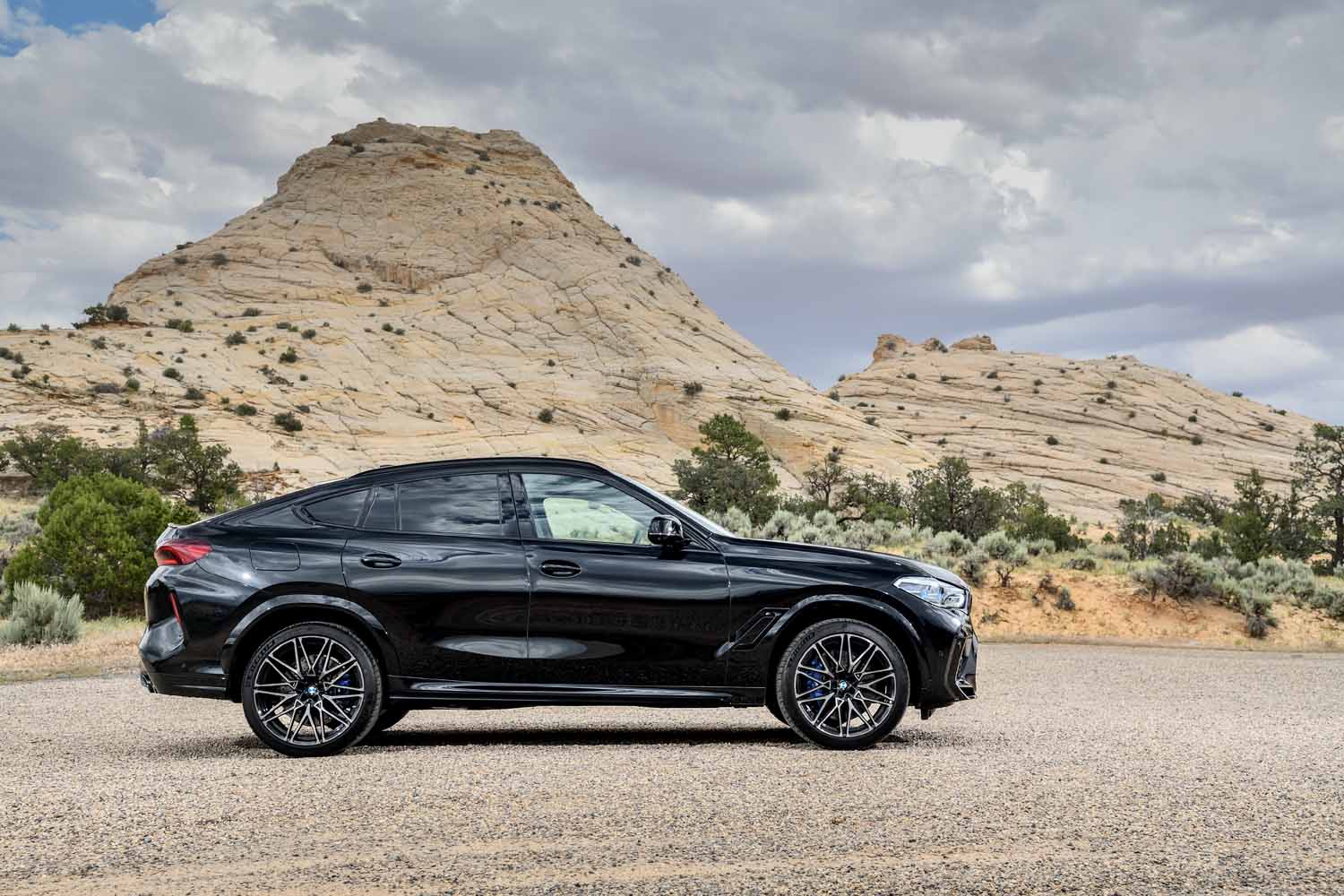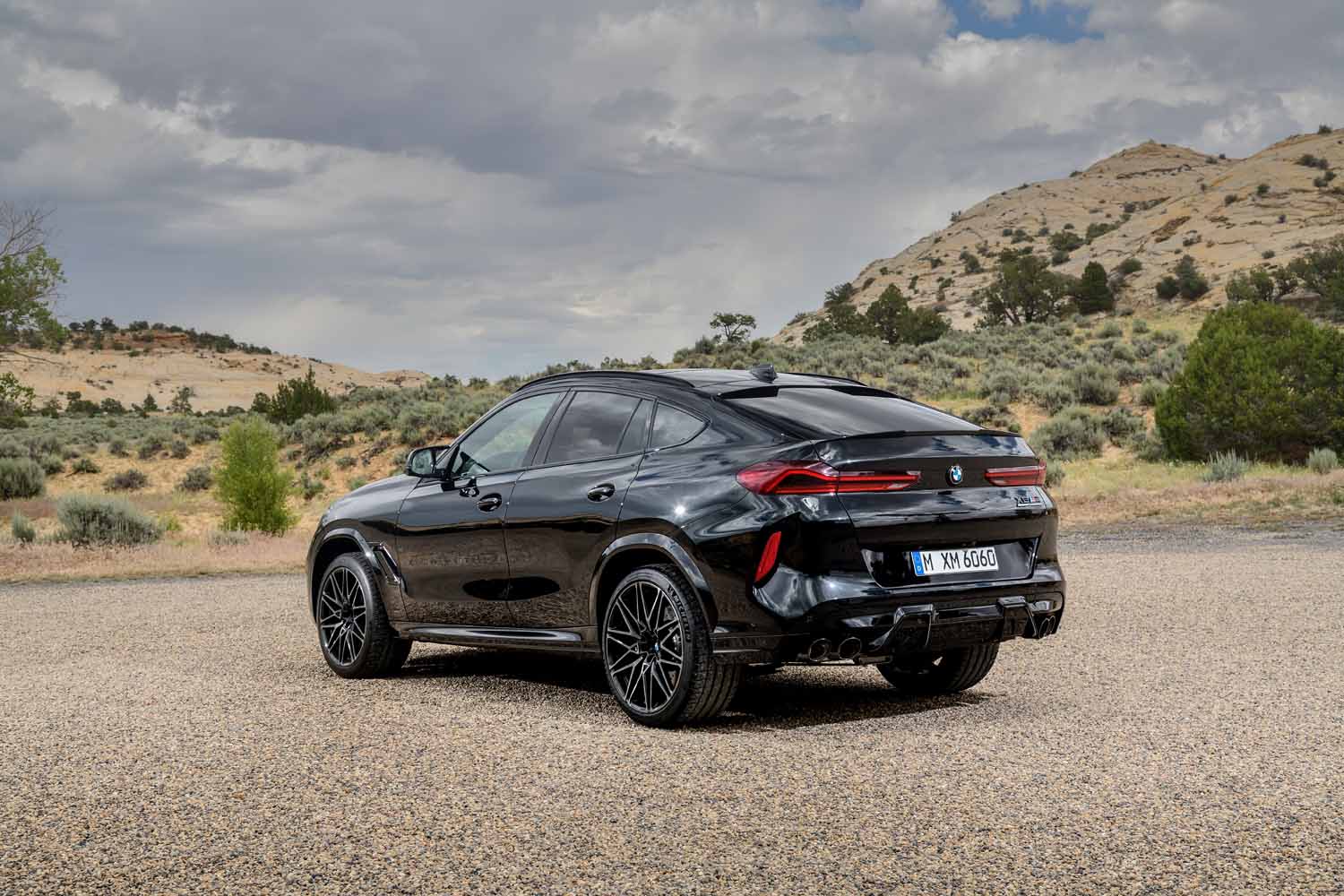BMW’s M division recently hinted it won’t make another station wagon, but it plans to continue injecting racing DNA into SUVs. The third-generation X5 and X6 are the latest off-roaders to receive the full M treatment. Both offer substantially more power than the models they’re based on, tech features developed with speed in mind, and an aggressive-looking design to match.
The X5 and the X6 are closely related under the sheet metal, so few will be surprised to find out the M-tuned variants look nearly identical on paper. Both receive a 4.4-liter V8 twin-turbocharged to make 600 horsepower at 6,000 rpm and 553 pound-feet of torque over a broad range that stretches from 1,800 to 5,690 rpm. The optional Competition package available from launch bumps horsepower to 617, while torque stays flat.
Power flows through an eight-speed automatic transmission, and a sportier evolution of BMW’s xDrive all-wheel drive system. The sprint from zero to 60 mph takes 3.8 seconds with the 600-hp engine, while the additional 17 horses shave a split second from that time, which is a rounding error at best. Both Ms are limited to 155 mph, but buyers who pay extra for the M Driver’s Package can reach 177 mph.
Stuffing a 600-hp engine in an SUV is a recipe for disaster if the power isn’t kept in check. To that end, M added extra chassis bracing, redesigned the suspension, and installed a firmer, speed-sensitive steering setup. The bigger brakes are controlled via an electric actuator with two settings called comfort and sport, respectively. This technology modifies the brake pedal’s response. It’s more immediate in sport mode, and more relaxed when the driver selects comfort mode.
The design changes are visible but discreet; stylists refrained from adding park bench-sized wings, and useless vents. The front end receives bigger vents that direct cooling air into the engine compartment, while the back end gets a diffuser flanked by quad exhaust tips. M-specific emblems and other add-ons (like a grille with double bars) add a finishing touch to the look.
While the cabin receives a handful of M-designed accents, the most notable difference between the Ms and the regular SUVs they’re based on is seen when the two 12.3-inch screens come to life. One replaces the instrument cluster behind the steering wheel, and the other displays the infotainment system. Both feature new menus, and redesigned graphics that provide performance-related information like a g-force meter, a turbo boost gauge, and a tire pressure gauge. Bluetooth connectivity, two USB-C ports, and navigation come standard on both SUVs.
Built in South Carolina, BMW’s hot-rodded SUVs will go on sale in early 2020. Pricing starts at $105,100 for the X5 M, and $114,100 for the Competition model. The X6 M and X6 M Competition are priced at $108,600 and $117,600, respectively. None of the aforementioned figures include a mandatory $995 destination charge. When they arrive, they’ll face competition from Mercedes-AMG’s V8-powered GLE.
Editors' Recommendations
- Oppo Find X5 Pro gets flagship Snapdragon 8 Gen 1 processor
- 2023 BMW iX M60 is electric, spacious, and surprisingly quick
- Vantablack BMW X6 show car looks perfect for a Bond villain
- BMW continues to define the concept of style over substance with the 2020 X6
